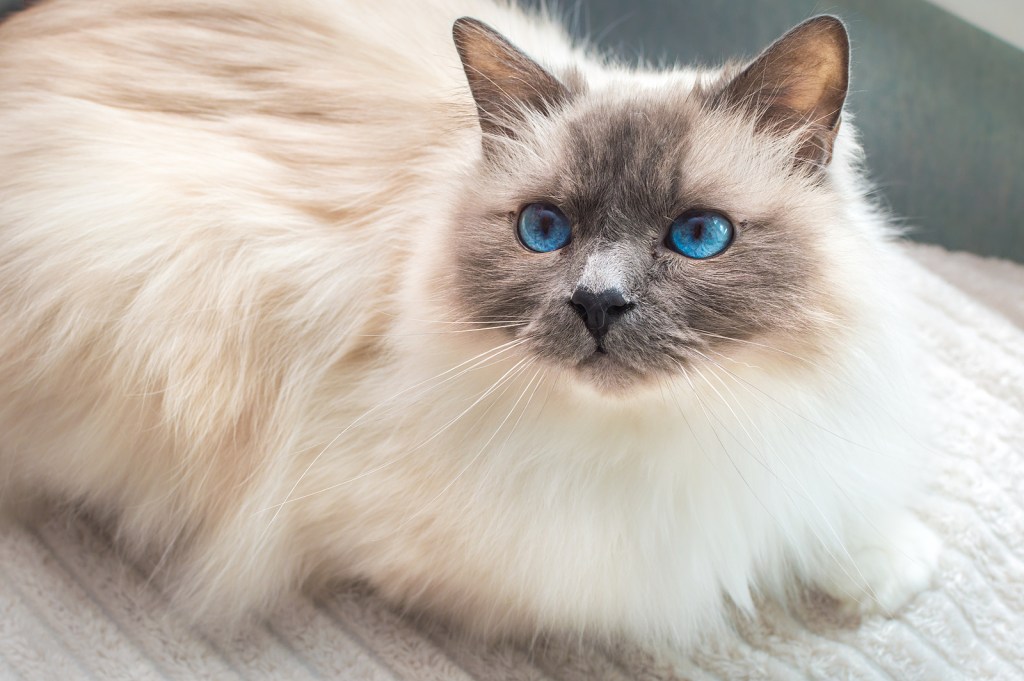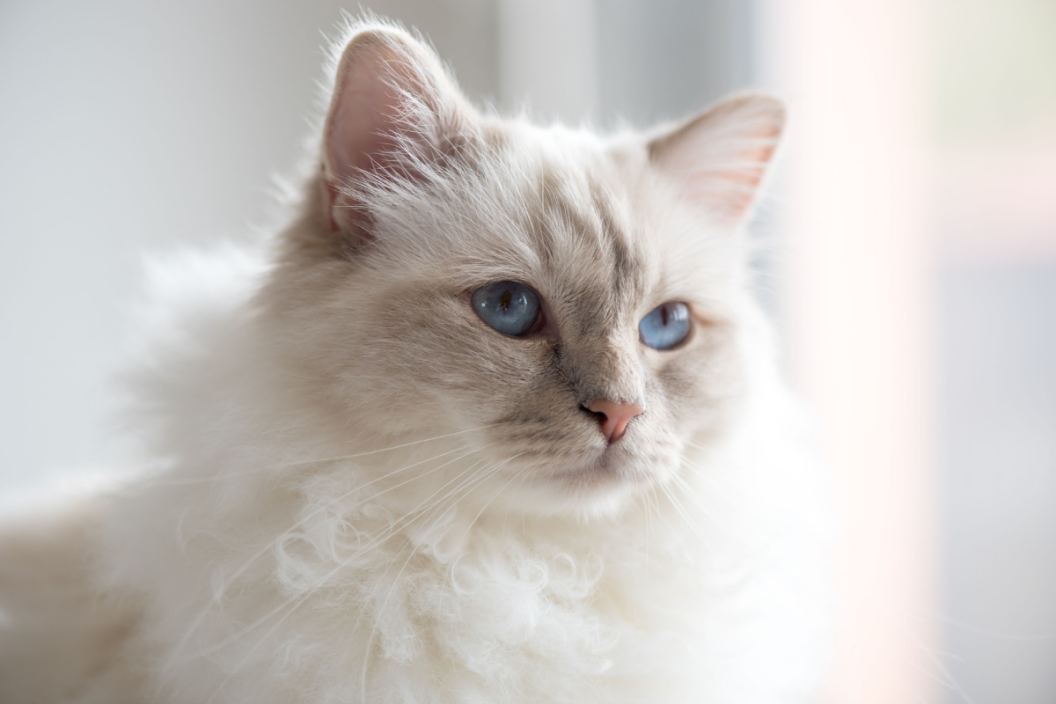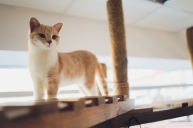Meet the sacred cat of Burma: the Birman cat!
The Birman cat breed descended from cats living in the Birman temple in Burma. They are incredibly loving and enjoy playing chase with other pets, taking turns being the chaser and the pursued. Birmans have a 15-year lifetime and can live into their late teens. Birman cats have a single coat, which means they don't have an undercoat and are less prone to matting. They are recognized by the Cat Fanciers' Association (CFA) as well as the International Cat Association. Not to be confused with the Burmese cat, the Birman makes an excellent pet for all kinds of people.
History

The Temple of Lao-Tsun was built in Asia for the worship of the goddess Tsun-Kyan-Kse. Mun-Ha, one of the temple priests, would kneel before the statue with the white temple cat named Sinh sitting beside him. One night raiders came into the temple as Mun-ha was worshipping and killed him. When Sinh was dying, Sinh put his feet on Mun- Ha and faced the goddess. His body immediately turned from white to gold, and his eyes turned blue, just like those of the god.
The Birman is a breed of cat that originated from the Birman temple in Burma. The first pair of Birmans were given to two men from France by the temple priests after their temple was raided again in 1919. By the end of World War II, only one pair of Birmans were left in the temple. Auguste Pavie and Major Gordon Russell helped the temple out after being raided and were given a male cat and a female cat, which established the breed in the West. In 1966, the Birman was recognized in Britain and 1967, and it became a recognized breed in the US.
Birman Cat Breed Personality

The Birman is a calm, affectionate cat who loves to be around people and adapt to any home type. Much friendlier than a Tortie, he likes to play chase with other pets, taking turns being the chaser and the one being pursued. You should also keep your Birman entertained with interactive toys that require him to think and move to pop-out treats. Birmans have a lifespan of around 15 years. However, it is normal for them to live into their late teens.
Birman cats have a reputation for being extremely loving and affectionate, having been raised as companion cats for many years. The Birman is a more private breed that likes to be attached to a single person. If their parent ignores them, some Birmans may get envious. They are not aggressive, despite being territorial.
Appearance

The Birman has highly distinctive markings with colorings such as lilac point, seal point, and blue point. They have a pointed cat with four white feet (laces) and deep sapphire blue eyes. The Birman's head is triangular, but because of its wide skull, the face can look almost rounded. The Birman has medium-sized ears and a Roman nose.
Although all Birman kittens are born as white cats, the adult's look is distinguished by a white or cream coat. They feature darker markings on their faces, legs, and tail, as well as snowy-white paws. The Birman is similar to the Thai Siamese, but he has a stockier physique, white paws, and a long, silky coat in various hues, including chocolate and lilac. They are medium- to large-sized cats, weighing between seven and twelve pounds.
Birman cats have long hair that is smooth and silky. Comb their coats once a week using a stainless steel comb to keep it healthy. You should also clip their nails regularly, perhaps every two weeks. The Birman has a single coat, which means they have no undercoat and are less likely to develop matting.
Finding Birman Breeders
If you want to purchase your feline companion from a breeder, a pet store, or another source, remember the ancient saying "let the buyer beware." Kittens should never always be accessible, there should not be several litters on the grounds, you should not be able to choose any kitten, and you should not be able to pay online with a credit card. These are all signs that you are not working with a reputable breeder. There is no way to ensure that you will never buy a sick kitten, but studying the breed and asking the appropriate questions can minimize the odds of ending up in a bad scenario.
Birman kittens are rarely found in shelters, but adult Birmans aren't as fortunate. Make sure that you have a good contract with the seller, shelter, or rescue group. In states with "pet lemon laws," confirm that you and the person you get the cat from both understand your rights and recourses. Once you've found a good Birman match, take your kitten or adult to a veterinarian as soon as possible.
Health Issues
Feline Hypertrophic Cardiomyopathy (HCM) is a disease that causes the muscle walls of a cat's heart to thicken, reducing the heart's effectiveness and occasionally causing symptoms in other regions of the body. Although the cause of HCM has not been determined, the fact that the condition is more common in certain breeds (including Maine Coon, Ragdoll, British Shorthair, Sphynx, Chartreux, and Persian cats) and that mutations in several cardiac genes have been identified in some cats with this disease suggests that genetics plays a role.
Cats with cardiac problems may develop FATE blood clots in their arteries (feline aortic thromboembolisms). Most blood clots that form are trapped just past the aorta, the major blood artery that transports blood from the heart to the body. A recessive genetic disease prevalent in numerous cat breeds, notably Birmans, causes hypotrichosis. This condition causes hair loss or balding, which appears in patterns or patches on the chest and head.
Do you love the Birman cat breed? Share with us on the Wide Open Pets Facebook page!




